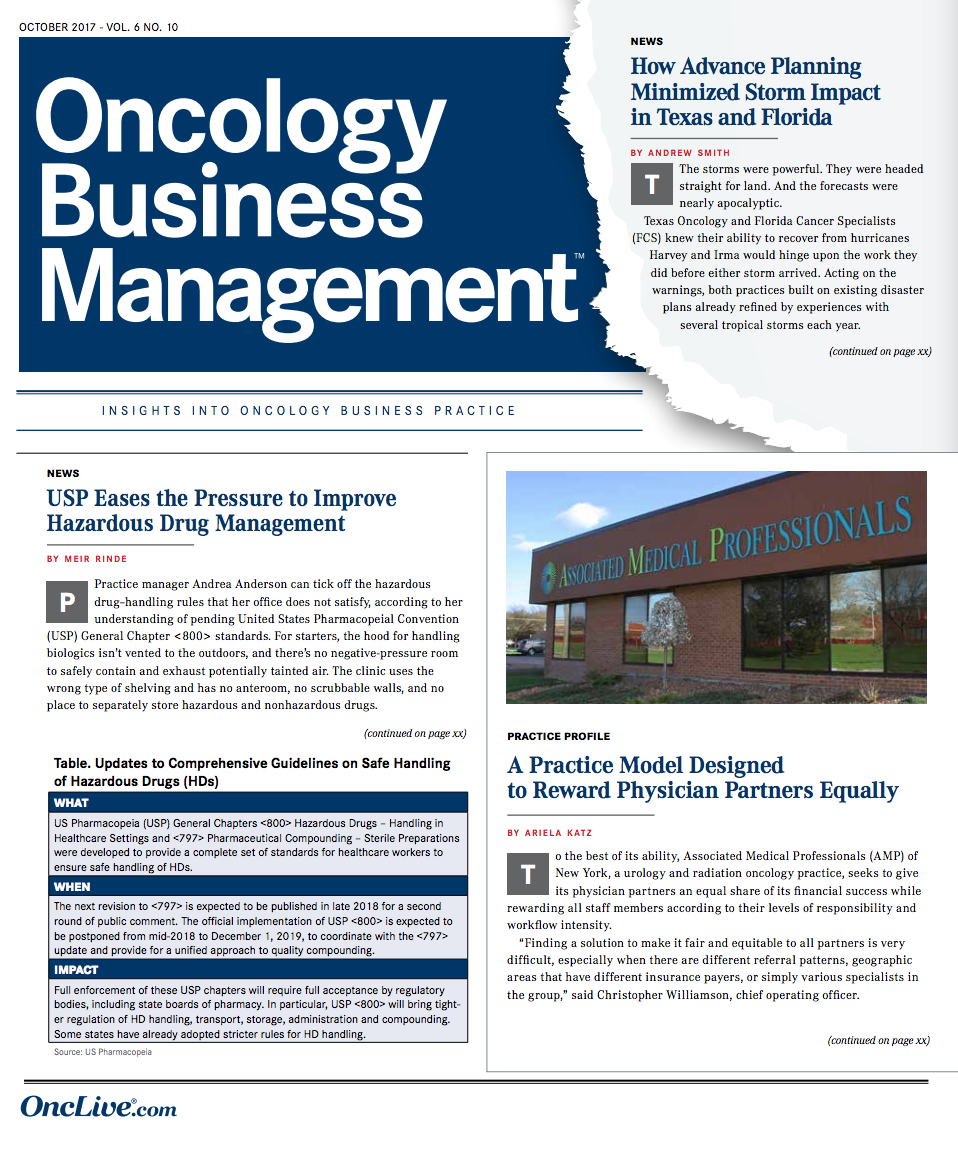A Payer's Takeaways on the OCM
In a recent interview with Oncology Business ManagementTM, Peter Aran, MD, medical director of population health management for BlueCross BlueShield of Oklahoma, discussed participation in the Oncology Care Model from CMS, which is designed to improve the quality and value of care.
Peter Aran, MD

Peter Aran, MD
OBMTM: Please explain your role as a private payer in the OCM.
Aran: Several years ago, CMS made a few wise decisions. One of those was creating the OCM—a multipayer initiative aimed at transforming care delivery. We do need to improve healthcare in the United States this way, so that doctors don’t have to do one thing for Aetna, one thing for Blue Cross, and one thing for CMS. The goals must be aligned.
Of the 48 payers that wanted to be part of the OCM, CMS chose 17, along with 192 oncology practices. We have 5 OCM practices in Oklahoma. We have a university practice, a rural practice, and 3 other practices, located in the 2 largest cities of our state. We have our own care track that is not simply part of the OCM track—it’s patterned 90% after that. The 1 difference is, we wanted to include the doctors, nurses, administrators, pharmacists, and social workers in our modified model because of something called the Quadruple Aim, which includes the goal of improving the work life of healthcare providers.
The OCM project is patterned after the Triple Aim—enhancing patient experience, improving population health, and reducing costs. What it doesn’t do is incorporate the frontline caregivers in the design and development of this project. Blue Cross Blue Shield is including the doctors in the frontline. We think that, as a payer, we are not only part of this multipayer initiative but also part of an expanded-care initiative.
Is Blue Cross Blue Shield mirroring the payments and incentives that CMS has mapped out for practices in the OCM, such as the monthly $160 care management payments?
When I went to medical school, the care team might have included the nurses, the pharmacists, and maybe the social services staff, nutritionists, and doctors, and now we’ve expanded some 20 to 30 years later to include even the people in the community and the payers as part of the expanded care team.Aran: One of the responsibilities of payers was to outline a payment system roughly similar to the payment structure of CMS. And we did that. We have the care management fees defined by CMS that are known as monthly enhanced oncology services (MEOS) payments. We also have a payment at the end of the care cycle that is based on quality measures and patient and family satisfaction. That’s our own combination. We have a slightly different point of view from CMS regarding how the payment formula should be developed. We put more emphasis on what happens a year later by using measures of quality, such as patient and family satisfaction.
What are your takeaways on the value of the OCM at this point in the pilot?
Our plan also includes a shared savings component that we think is more important for the financial viability of the practice than the MEOS care management fee. The reason we think that is because of our experience with another CMS Center for Medicare & Medicaid Innovation (CMMI) program, the Comprehensive Primary Care initiative, which was designed to strengthen primary care by offering care management fees and shared savings opportunities. That program ended on December 31, 2016, and has been followed up with Comprehensive Primary Care Plus.Aran: The biggest takeaway is that this gives our patients access to care and, on the back end, payers pay nurses and pharmacies and doctors for the care received.
All insurance companies have cadres of nurse managers, transplant coordinators, physicians, pharmacists, and social workers who all interact with patients above and apart from what happens within the walls of the hospital or doctor’s office. What I see happening is that, someday, all those touches that the payers have will be integrated with the care being given in the other parts of the healthcare world. So, the touches that our transplant nurses or our care managers have with patients with chronic disease or that I, as a physician in population health, have—all of that eventually will be funneled into the electronic medical record. Everybody taking care of the patient will know that Mabel has been communicated with 7 times in the last 3 months by the folks at Blue Cross Blue Shield, and what we have discussed with Mabel about her diabetes or chronic obstructive pulmonary disease or congestive heart failure is all documented in the medical record, allowing for greater continuity of care. That’s the biggest takeaway. Insurance companies are part of a healthcare team, taking care of a patient outside of the walls of a hospital or doctor’s office.




